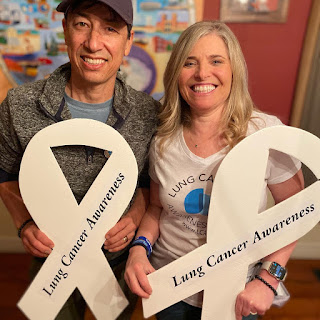Putting More Runners in the Race
When I heard that Dr. Jim Allison won the Nobel Prize the other day, it hit me that for breakthroughs in medical research to happen, we need to have as many runners in the race as possible. It makes sense right? The more scientists we have in the field researching cancer the better chance we have that one (or more) of those researchers in the lab will hit on an idea that will lead to more advanced studies. And the more new studies undertaken by labs - the more runners in the race - the closer we get to having real breakthrough treatments get to patients. Just like in a marathon - the more runners who train and qualify for the race, the more who are likely to cross the finish line.
In fragile X, FRAXA Research Foundation has been putting more runners into the race for many years. In early years there was not much known about fragile X. So FRAXA poured millions of dollars into basic research at labs around the world. The idea was that the more brilliant minds in the laboratory we have working on unlocking mysteries of fragile X, the better the chance that one - or more - of these labs will discover something that will move the science forward. Many of these FRAXA funded postdocs published successful research, moved on to start their own labs and brought their own postdocs into the field - more runners in the race!
By identifying many new treatment pathways through lab studies in mice and fruit flies, FRAXA moved the science forward by funding research that matched potential drugs to treat those pathways in clinical trials. Some researchers used the results of FRAXA funded small clinical trials to go to larger funding sources like the National Institutes of Health (NIH) and the Department of Defense - more runners in the race!
And in recent years, FRAXA has built partnerships with pharmaceutical and biotech companies that have brought more smart minds and technologies to the field of fragile X research. FRAXA supports a mouse facility that companies can access to test their drugs for potential in fragile X. The FRAXA Drug Validation Initiative (FRAXA-DVI) provides speedy, cost-effective, objective testing of potential new Fragile X treatments. FRAXA has funded FRAXA-DVI every year since 2011. There are several examples of young startup companies who have tested their compounds in FRAXA fragile X mice and seen positive results. These companies then can take the data from these tests to start their own clinical studies. More runners in the race!
One example is Tetra Discovery Partners, a startup biotech company that has a drug they are studying in Alzheimer's Disease. Tetra had a hunch that it might work in fragile X, so they tested their drug in the FRAXA-DVI and had positive results. The data was used to get approval for a Phase 2 study of BPN14770 as a potential treatment for Fragile X Syndrome. BPN14770 has also received Orphan Drug Designation from the U.S. Food and Drug Agency for the treatment of Fragile X Syndrome. And the clinical trial is being run by a world class fragile X researcher at Rush University in Chicago, Elizabeth Berry-Kravis, MD, PhD. And FRAXA is funding this trial! More superstar runners in the race!
This is why we need to keep supporting medical research. It takes the federal government, philanthropy and industry all working to support more brilliant minds and ideas. Only by continuing to put more runners in the race will we find effective treatments and ultimately cures for diseases and disorders like cancer and fragile X.
#Cancer #Research #fragileX #Gratitude


